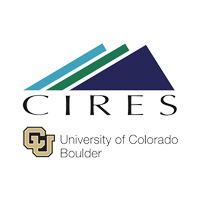Open Space activity to build community at ITGC meeting
“IDEA” stands for Inclusion, Diversity, Equity and Accessibility. These are grand aspirations! Throughout the last 6 years of the ITGC programme, the ITGC IDEA Council has been working to embed a culture of IDEA in all ITGC activities. This is of course much easier said than done. To make progress, we have created opportunities (both time and space) for sharing ideas and gathering thoughts from all team members. We’ve been considering how IDEA fits into everything our community does, whether in Antarctica or back at home in the office. Here Joanne Johnson and Leilani Henry, members of the IDEA Council, share an activity from the recent September 2024 ITGC meeting in Cambridge, UK.
“Open Space Technology”, created by Harrison Owens, became popular in the 1980s. It allows groups to self-organize, create their own agendas and work collectively to solve complex problems through conversation. Our goal for using Open Space within ITGC was to uncover IDEA topics of importance to community. It allowed for small group conversations that identified themes of particular significance for us. We will use these themes to help with our continuing effort to build a more inclusive community and positive work culture within ITGC and beyond.
We used Open Space at our meeting to encourage discussion about any topic that team members wanted to talk about. As with anything where people are asked to reflect and share their own experiences, some people didn’t want to engage, and others were understandably nervous about it. To help people feel more comfortable, we tried to create a sense of informality. We made the activity an open invitation (most people did choose to participate), and we used the Open Space format of sitting in a circle – which is much more friendly than a typical conference room set-up where people are looking at each other’s backs! We also had a set of ground rules, which included the opportunity to “vote with our feet” and move to another group if and when we felt we wanted to do so.

Because the agenda for Open Space is set by the participants, we had no idea what topics would come up. Indeed, we didn’t know if anyone would suggest anything…which was a little unnerving! But, in the end we needn’t have worried – no one was short of ideas once a few people had made suggestions. Since some of the topics were related, a few groups decided to join up with others so that more people would be able to participate. The topics we discussed covered a really wide range: we had practical topics like the use of Starlink in the field, how to deal with delays and disappointment, how to give feedback, and what support mid and late career researchers need, to more abstract themes such as imagined versus real hierarchies, the impacts of the lack of racial diversity in Antarctic science, and whose struggles are we not hearing?

Groups chose how and where they wanted to break-out for their conversations: some chose comfy chairs in the canteen, others felt comfortable sitting on the floor in the conference room, and some went outside for some sunshine. It was important to allow each group to decide for themselves where and how they wanted to discuss their topic, and people were able to move between groups whenever they wanted to. In the end, the hour passed really fast, and all groups had lively discussions!
The mood in the room after the discussions felt different – the hubbub of conversation was more animated, and we wondered if people felt closer as a result of sharing their concerns with others and hearing their experiences – some said they felt less alone now they knew others felt the same way as them. The two-minute summaries from each group at the end were enlightening; they gave us in the IDEA group much food for thought. Indeed, there was so much to say that several of the reporters had to be cut off in mid-flow (Leilani had helpfully brought a stopwatch!). A few examples of potential future IDEA-related actions that were discussed include translating ITGC educational materials into more languages, improving access to appropriate field clothing, and creating department policies so students have multiple mentors and advisors.

On some issues, ITGC and the wider science community appear to have come quite a long way in the past 6 years, but on others, we have still not made much progress. Although outwardly we appear to have made changes, sometimes it’s not clear how much we have changed on the inside. Are we just going through the motions? Or have we really changed the way we think and behave? How often do we think about IDEA in our everyday scientific lives?
It is good to keep on asking ourselves these questions, and to not feel disheartened when we feel like progress is slow – we know that whilst each small step we take is making the academic world better for each other, the job will probably never be done because new themes will emerge and new people will join in as time goes on. Nevertheless, we have been really encouraged to see that the number of participants in IDEA activities within ITGC has increased dramatically since our first efforts to talk about it. We found Open Space very helpful to get people talking and highly recommend it to other groups! To learn more, check out this description of Open Space.







